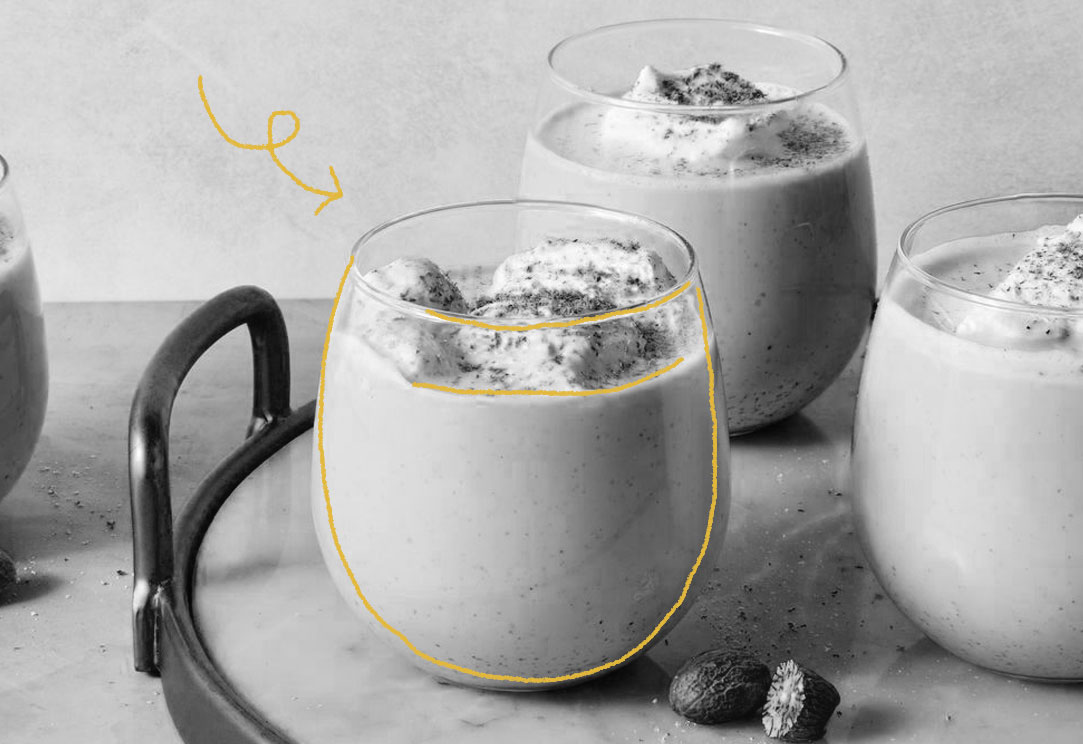Although there is some debate among food historians about the exact origins of eggnog, most agree that it originated from a drink called posset that was popular in early Medieval Britain. Posset was a hot, milky, ale-like beverage and by the 13th century, monks were known to drink it with eggs and figs. Milk, eggs, and sherry eventually became the main ingredients as the drink evolved into something we might recognize as eggnog today. Because these were expensive foods usually reserved for the rich, eggnog was used when toasting prosperity and good health. Eggnog gained its tie to the holiday season when the drink was introduced to the American Colonies in the 1700s. The recipe also evolved there, too. Because milk and eggs were abundant due to all the farmland and rum was much cheaper in America, these quickly became the staple ingredients in eggnog, and the drink was enjoyed more widely due to greater access and lower ingredient prices relative to those in Britain. George Washington himself was a fan and even wrote down his own recipe, which historians note was quite heavy on the alcohol! Mexico developed a similar drink called rompope and in Puerto Rico, a similar beverage made with coconut milk and known as coquito became popular. As for the English name of the drink, it’s not clear where it comes from. Some claim that “nog” comes from “noggin” (a wooden cup) or “grog” (a strong beer). But we do know that by the 18th century, the term eggnog was regularly being used to describe the drink that we now enjoy each year during the holiday season. Today, eggnog remains quite popular and many supermarkets carry mass-produced versions of the beverage around the holidays, although it is worth noting that many fans of the drink argue that homemade versions are far superior in taste.

Your go-to guide for weird history facts
Subscribe to the FREE daily email that makes learning about history fun.


